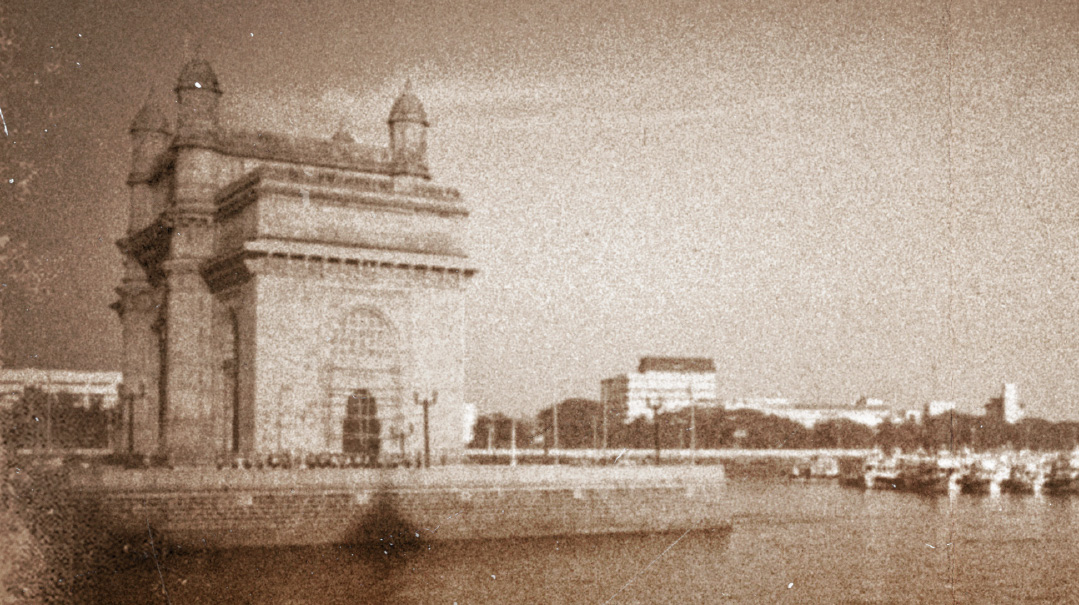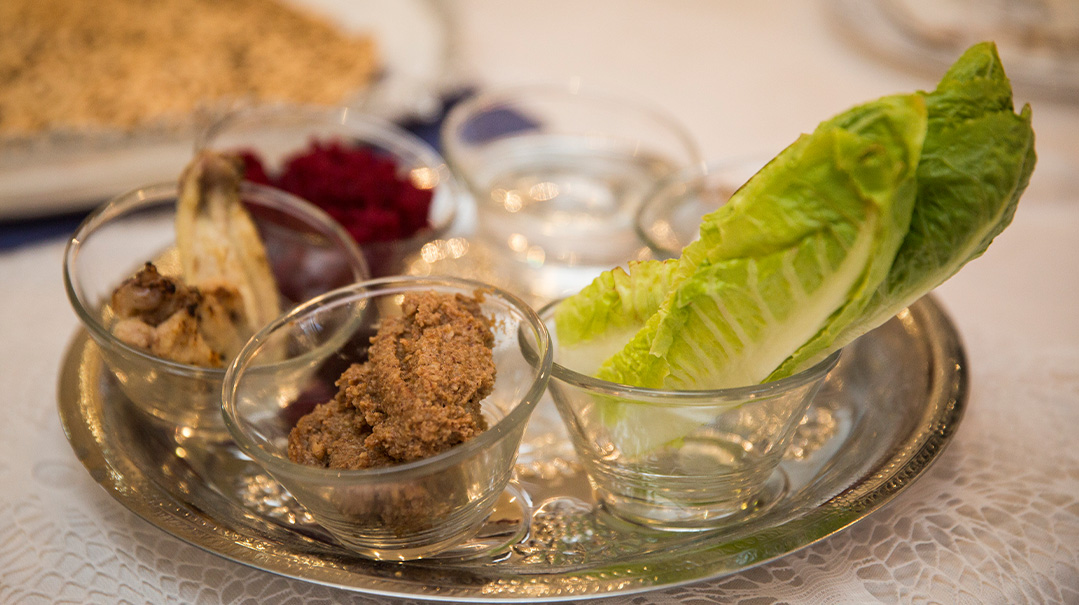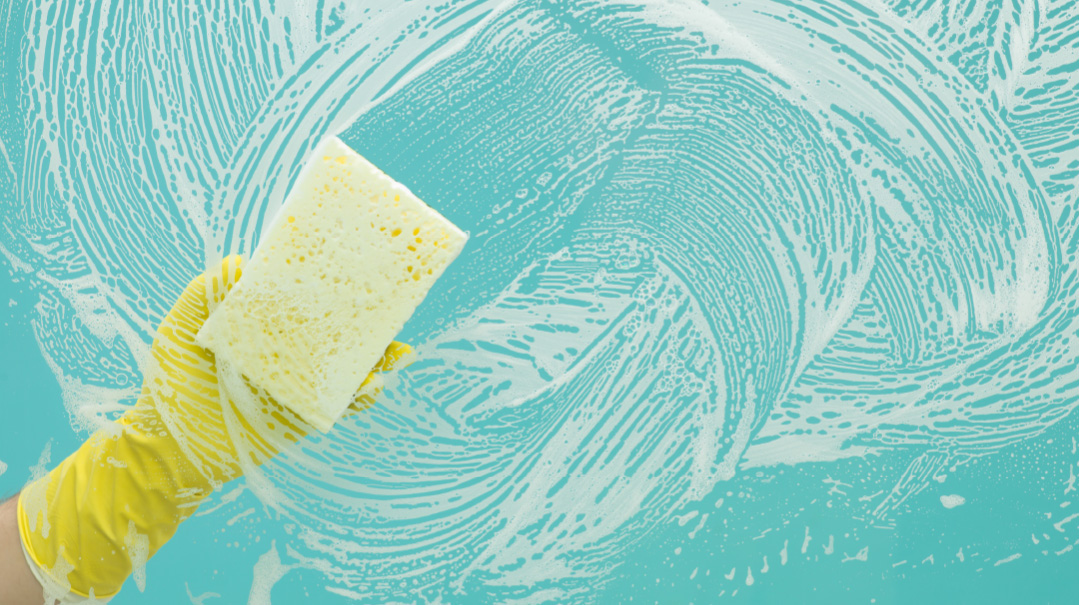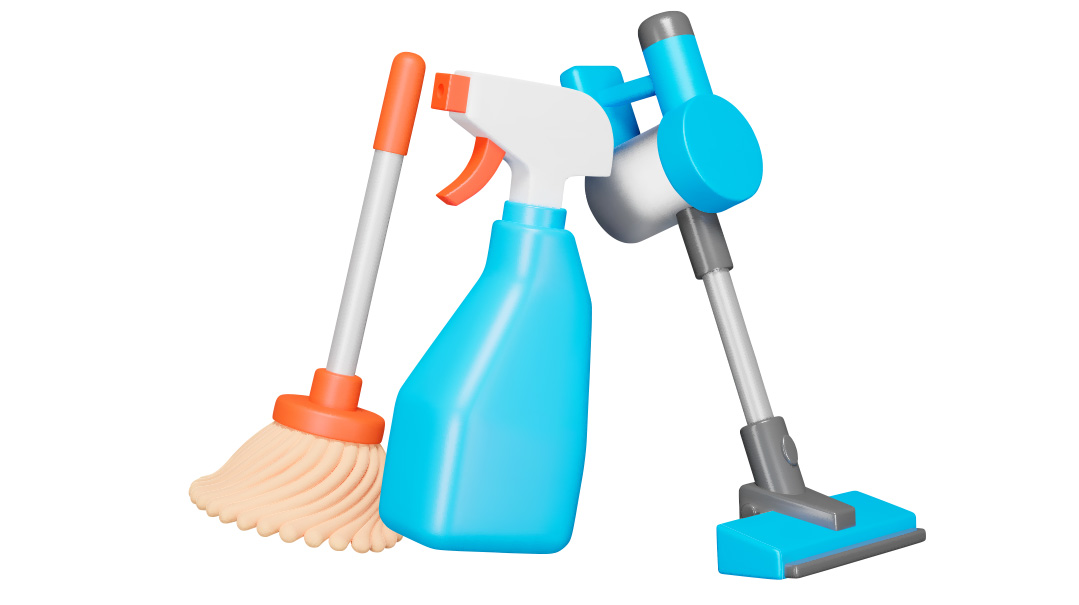Pesach in Bombay
| April 3, 2023We didn’t have Haggados for each person, and certainly there were none for children. My grandfather had one, and perhaps the other men as well

As told to Elana Sotil by her mother, Kathy Barukh
Sydney, Australia. 1980
AS
I step into the kosher grocery store, I feel my heart expand wide like the vast ocean I recently crossed.
I walk through the aisles slowly, passing shelf after shelf filled with an abundance of processed, packaged, imported kosher foods that I could never have imagined possible as a child. Milk, yogurts, cheeses, jams, cookies, crackers, ice creams — so many choices, so many varieties. When Pesach arrives, I expect all these options to disappear. But they don’t. Instead, new products made especially for Pesach replace them.
Finally, I reach the last aisle at the back. The shelves are lined, stacked high with perfectly square boxed matzah. I marvel at the shape: we grew up only eating round matza, and it certainly never came in boxes.
I fiddle with the new ring on my finger. It is what has brought me here to Australia, across the globe, away from my family and everything familiar in India, to a new type of Jewish world.
Everywhere I look, the word “modern” screams out at me. The cars, the buildings, the stores. Sometimes I walk by a shul, and then, amazingly, I pass by yet another one. I dream of adding my own children to those playing outside the large school buildings that are full of only Jewish students.
I walk down the streets of Sydney, my cheeks feeling the effects of the huge smile often spread across it as I bump into yet another Jewish woman, or wave to someone rushing by on her errands. One elderly lady takes me under her wing, teaching me everything a Jewish woman must know to thrive in this big new city.
By the time I return home, I feel lighter, having had the chance to get a glimpse into the lives of new friends, and to allow them a glimpse at my own.
My kitchen is my happy place. I add spices and cook the vegetables just like I watched my mother do years before. Back then, we had just fresh ingredients accompanied by fragrant Middle Eastern spices. Now I stand in my new home with a fridge full of vegetables, plus a few packaged items I’ve selected from the kosher store. Their labels reveal that, like me, they’ve also traveled far; they’ve made the long journey from the US or Israel all the way to my small kitchen in Sydney.
Bombay, India. 1960s
In the late 1800s, my ancestors arrived in Bombay (renamed Mumbai in 1995), seeking a better life than the one they’d had in Iran. They found a growing community of Jews primarily of Persian and Iraqi descent — word had spread through those countries that life in Bombay, a British colony, was more progressive and prosperous. My grandmother would laugh as she’d recall her own mother telling her how her parents heard about running water and the existence of a tap through which it flowed, and her excitement to see this invention with her very own eyes.
The Jewish community was centered in an area called Byculla, where Bombay’s first shul was built by the wealthy Sassoon family, who owned all the cotton mills of Bombay. Called the Magen David shul, the structure stood out prominently with its distinctive light-blue color. The Jewish community lived a peaceful and safe life, mostly housed on one street close to the shul. Many Jews had servants, according to their means. The Sassoon family also built a school for Jewish children. Sometime later, the Colaba shul was built in another area.
There was no official rav. Families passed down Torah knowledge from father to son and the main Baghdadi chachamim from overseas were considered the spiritual leaders. Men from families who were more learned were addressed by the title chacham. The shul did have a chazzan who leined from the Torah, and a shamash who took care of the shul and was given quarters near it.
There was no feeling of being more frum or less frum. Everyone kept the mitzvot and traditions with the knowledge passed down by their own family members. If someone was a mohel, it was because his father was one, and trained him.
By the 1960s, the Jewish community had dwindled as many migrated to the UK, US, Australia, or Israel in search of a better Jewish life. The families who remained were spread out among different suburbs.
Growing up in Bombay in the 1960s, my life was anything but typical for a young Jewish girl. We lived in a remote English colony gated to the outside world. The colony was dedicated to employees of the power station, where my father worked as an engineer. Due to robberies and break-ins, tight security was enforced. Entrance and exit were strictly for residents and guests.
Inside those gates, we had everything we needed for family life. A store, a school, a park, a club with a game room and small library, and a company doctor with a dispensary. We lived in a bungalow, a spacious free-standing house with a neat garden. I felt lucky when I compared it to the cramped conditions in the Byculla area.
A servant came each day. She scrubbed the dishes, washed the clothes, and hung them up to dry. She swept and mopped the floor. There were no washing machines or dishwashers available.
I attended the local girls’ school, where we learned everything in English. My classmates knew I was Jewish, but not much about what that meant. My Jewish connection was with my extended family, some of whom I saw more regularly than others. The ones who lived close enough for contact lived between half an hour to an hour away. We had a car, which made it easier for us to get around. Most people traveled by bus, tram, train, or rickshaw.
We lived outside the Jewish quarter, but my parents would make the hour-long journey when there was kosher meat to buy, usually before the chagim. We had a regular fridge, as well as a freezer where we stored our meat. When I was very young, my father would make the trip once a week as the meat was available weekly. In the late 60s, meat availability changed, and we’d only buy it for the Chagim.
I don’t remember ever eating beef as that was difficult to obtain (cows are sacred animals in India). Instead, we ate chicken or goat meat. Meat was reserved for Shabbos. During the week, our diet was basically vegetarian with fish, eggs, legumes, fruit, and vegetables. Packaged food wasn’t so available, even throughout the year. Chocolate was a treat set aside for special occasions.
As kids, we had clothes sewn for us, but not for every Yom Tov, usually just for Rosh Hashanah. My mother would take us to the markets outside the colony, where there were many stores selling dress material. After selecting a fabric, we’d head to the local tailor where we’d peruse pattern books from which they styled the clothes. Everything was tailor-made; there was no concept of purchasing premade clothing.
Sitting at a table together with extended family wasn’t something we took for granted. Since there were no private phone lines, when a relative decided to visit, they simply made the hour-long journey and showed up at your door. My mother happily escorted them in, and promptly started cooking a delicious meal. It didn’t matter what was planned for that day. When a relative arrived, plans changed. The house was filled with the strong smell of cumin, cloves, and coriander, and the table was soon laid with rice, chicken, vegetables, and dips fit for royalty. They’d stay for hours, laugh over the filling meal, while we all reveled in each other’s company.
Every Yom Tov was a highlight in the year. Rosh Hashanah and Pesach brought the extended family together for the seudos, but for Pesach, the preparations started much earlier.
There was no option to sell chometz over Pesach; we had to make sure it was all used up or disposed of, so nothing remained in the house Erev Pesach. We were accustomed to making many foods from scratch, but Pesach meant making everything from scratch. Not just jams, but also wine. There was no kosher wine available for Pesach.
My father would start the process a month before Pesach, bringing out the jars he kept aside especially for making Pesach wine. He began by soaking black raisins in an earthenware jar, which he carefully placed in a cool, dark corner of the house. That jar was precious, and we kids knew that going near it was off-limits. It was hidden in a corner in my parents’ bedroom as that was deemed the safest place. After about a week, he’d dedicatedly press, stir, and squish the raisins daily. We watched in fascination as they slowly changed form. At the end of the month, we’d have a properly fermented thick, sweet red wine ready, which he’d strain and pour into bottles for Pesach.
Matzah was made in the Jewish quarter. The shul had a kitchen built especially for the purpose of baking matzah. Located near the shul, it was closed the rest of the year and only used by certain community members. Here they were responsible for providing enough matzah for every Jewish family in the area.
Each year, my mother sewed a new, large cloth bag — around four feet wide and four feet long — to carry those matzos home. Every family received a quantity of matzah depending on the number of people in their family. Before Pesach, my father made the journey to the Jewish quarter, filling the bag my mother had sewn that year with large, round, hand-made matzos. To me, as a young child, the tall bag seemed to hold one to two hundred matzos. It was enough to last us the entire week of Pesach and then some.
We didn’t have a Pesach kitchen or separate Pesach dishes or cutlery. The day before Pesach, my parents kashered all the things we’d need to use over Pesach, after which my mother immediately started cooking. By the next morning, strong aromas wafted from the kitchen, carrying the smell of Pesach. My mother made basic meals (no entrée) and dessert was a large platter of fruit. Our charoset, or halek as it was called, was a syrup made from pure dates, without any additives or other ingredients.
Pesach brought the family together. Like everywhere around the world, everyone living close enough gathered for the Seder, led by my grandfather. Our home was the place everyone congregated for the first Seder. For the second night, we all joined our aunt and uncle.
Before the Seder, the women gathered in the kitchen to help the hostess prepare fresh salads while we kids caught up with cousins we hadn’t seen for a long while. Sometimes we’d have the chance to enjoy the company of my grandmother and maybe an aunt for even longer when they stayed over for the chag.
We didn’t have Haggados for each person, and certainly there were none for children. My grandfather had one, and perhaps the other men as well. Listening to my grandfather read the Haggadah was something special. With his loud booming voice, he read the timeless words in his singsong tune.
Everyone was focused on bringing the Seder to life, especially for the kids. Hugs, laughter, and a few pinches on little cheeks were given in abundance. During the Seder, my mother tied a sack to the back of one of the children and everyone would ask the excited child where they were coming from and where they were traveling to. We kids looked forward to role playing Yetziat Mitzrayim.
The young adults weren’t excluded from the family fun either. If there was a newly married man or a young man present, he’d be challenged to eat a huge sandwich filled with maror, charoset, and layers of matzah while everyone else animatedly cheered him on.
The Seder plate sat majestically on the table. It was a huge aluminium plate, called majma in Persian. Generous amounts of eggs, lettuce, and the rest of the Seder simanim were arranged on it. At certain points, it was covered with a cloth. Some of the adults held it up together, swinging it up and down as they sang Dayeinu. The fun and energy were contagious. It’s an eternal imprint I still hold close to my heart.
Sydney, Australia. 2023
It’s now many moons later. I get up each morning and daven in the living room where my children once sang their davening as little kids. At age five, my children went off to kindergarten and, with time, I waved them off as they headed out to the Jewish day school. Siddur parties, school productions and mock-Pesach Seders dotted the years. Now my grandchildren take their turn.
These days, I’m used to the new way of preparing Pesach. I stride into the familiar store and buy matzah in a box. Mostly square, but sometimes the round handmade ones as well.
Life is sometimes busier, sometimes less so. Each year, I choose whether I make all the ingredients for cooking and baking myself, or buy some of the basics. The stores are lined with Pesach imitations of foods we eat year-round. Sometimes I pick something to try, other times it feels strange — I still can’t imagine Pesach pasta on the table.
The recipes we use are the ones I grew up with. Perhaps a few ingredients are store-bought, and some dishes contain a dash more spices than we had as kids. I keep a good selection of chocolates and treats for the grandchildren, to sweeten the week ahead and bring smiles to their little faces.
When Yom Tov season approaches, I take my children through the stores in search of something nice to wear. My children and grandchildren can feel like the prince and princesses they are with a new piece of clothing.
Every year, I remove well-sealed boxes from the top of a designated cupboard. Inside, the set of dishes and cutlery I’ve set aside especially for Pesach are still delicately wrapped in tissue paper. I spread out the plates, bowls, and cups over which I’ve spent many a Motzaei Pesach laughing with my daughters as we washed, dried, and rewrapped them for the year to come.
Chol Hamoed is so much easier with plasticware and disposables available in abundance for family picnics. Some family members are close enough to visit regularly; some are on the other side of the globe.
Shul is within walking distance and having the ability to hear the tefillos is something I never take for granted. My children and grandchildren grow up freely hearing those precious words.
The Seder brings together those of us who can join. We all sit with a Haggadah open in front of us. The kids have ones designed just for them, with translations and pictures. My grandchildren still carry the sack on their backs as they pretend-play Yetziat Mitzrayim. Just like it was for me in Bombay, what’s passed down through the generations is not just the Pesach story but our own Pesach experiences as well.
(Originally featured in Family First, Issue 838)
Oops! We could not locate your form.







